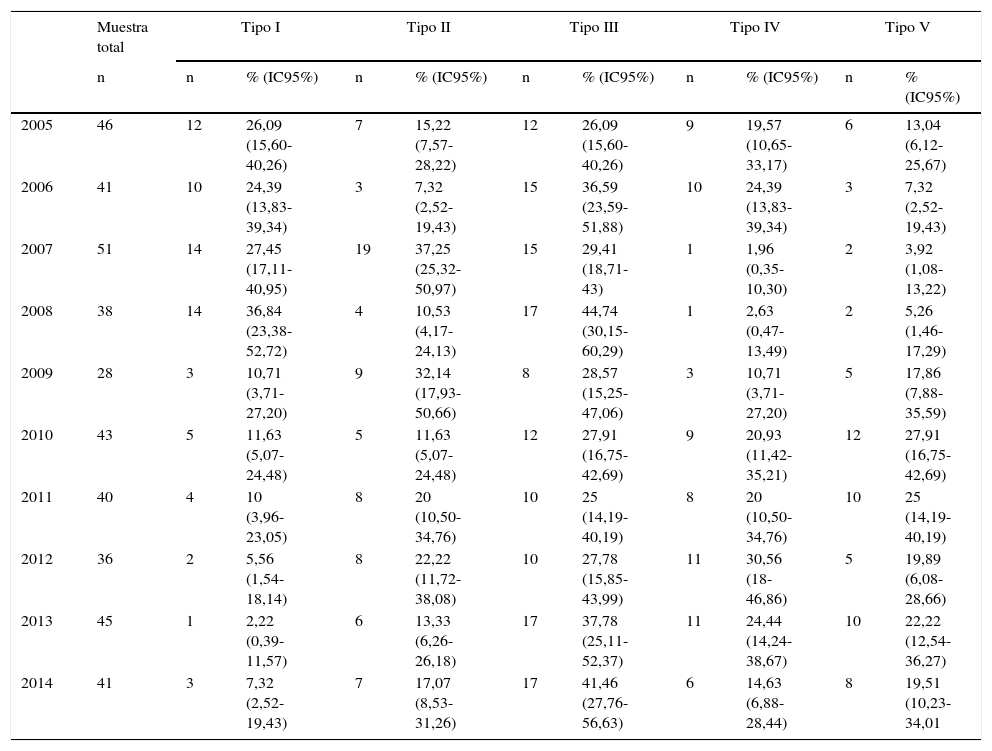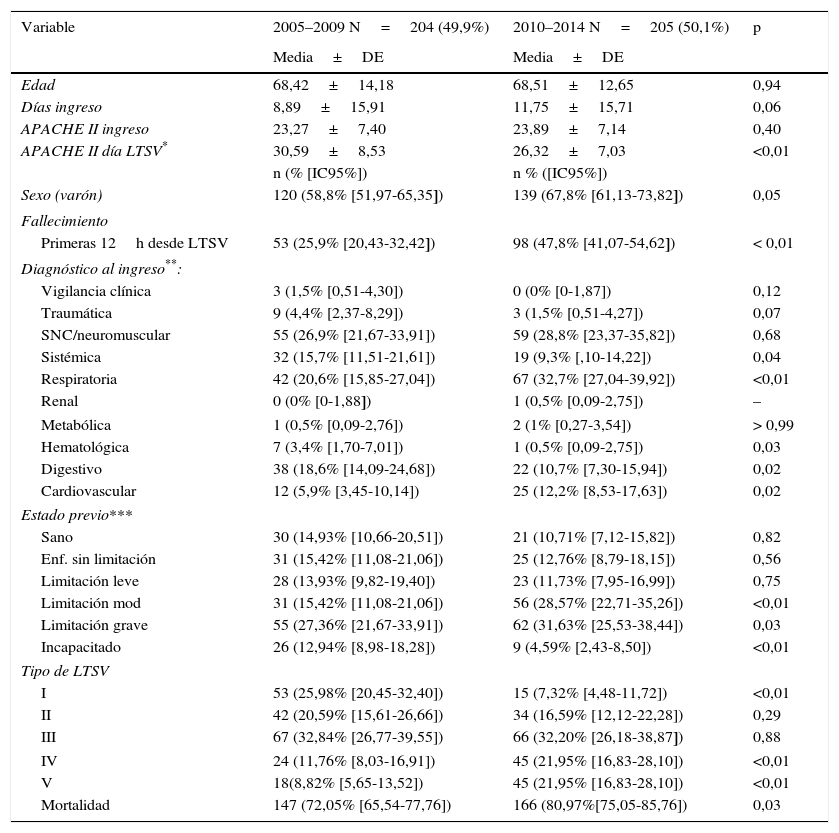Evaluar cómo han variado las decisiones de limitación del tratamiento de soporte vital (LTSV) en una unidad de cuidados intensivos (UCI) de tercer nivel a lo largo de un período de diez años.
MétodosEstudio observacional, retrospectivo y comparativo, en la UCI de un hospital universitario terciario en España, desde enero de 2005 hasta diciembre de 2014. Mediante el análisis de la base de datos informatizada del servicio, se obtuvo la muestra de enfermos en los que se realizó LTSV en el periodo descrito. Se presentan las variables categóricas como frecuencias absolutas y porcentajes, y las cuantitativas como media y desviación estándar. La χ2 se utilizó para evaluar la significación estadística de las variables categóricas y se utilizó la t de Student en las variables cuantitativas. La relación entre las variables y la decisión de LTSV se estudió mediante regresión logística.
ResultadosLTSV se realizó en 409 (4,95%) a partir de 8.258 pacientes estudiados. El análisis comparativo mostró diferencias significativas entre el valor de APACHE II el día de la decisión LTSV (p=0,0001), se produjo una modificación en la distribución del tipo de LTSV, el estado de salud de los pacientes previa al ingreso en la UCI y mortalidad en la UCI en diferentes etapas. La LTSV tipo I pasó de ser el tipo de LTSV más frecuente en el año 2005, a ser el menos una década después (26,06%; IC95%: 15,60-40,26) frente a 7,32%; IC95%: 2,52-19,43). Actualmente la LTSV tipo V se ha convertido en frecuencia en la segunda opción (19,51%; IC95%: 10,23-34,01) cuando se decide la LTSV.
ConclusiónLas decisiones de LTSV han cambiado la forma y las consecuencias de tomar esta decisión. Parece razonable estandarizar registros individualizados para tal finalidad.
To evaluate how the decision regarding limitation of life support treatment (LLST) has varied in a tertiary ICU over a period of ten years.
MethodsAn observational, retrospective and comparative study of ICU patients in a tertiary university hospital in Spain from January 2005 to December 2014. Through the analysis of the unit's computerised database, we obtained the sample of patients in whom LLST was performed in the period described. The categorical variables are described as absolute frequencies and percentages, and the quantitative variables as mean and standard deviation. Chi-square was used to assess the statistical significance of categorical variables and Student's t-test was used for quantitative variables. The relationship between variables and LLST decision was studied using logistic regression.
ResultsLLST was performed in 409 (4.95%) of the 8,258 patients studied. The comparative analysis showed significant differences between the APACHE II values on the day of the decision regarding LLST (p=.0001), there was a change in the distribution of the type of LLST, a change in the health status of patient prior to ICU admission and ICU mortality at different stages. Type I LLST went from the most common type of LLST in 2005 to the least common a decade later (26.06%; 95% CI: 15.60–40.26 versus 7.32%; 95% CI: 2.52–19.43). Type V LLST is currently the second most common option (19.51%; 95% CI: 10.23–34.01) when deciding on LLST.
ConclusionLLST decisions have changed the way in which this decision is made and the consequences surrounding it. It seems reasonable to standardise individualised records for this purpose.
Artículo
Comprando el artículo el PDF del mismo podrá ser descargado
Precio 19,34 €
Comprar ahora









